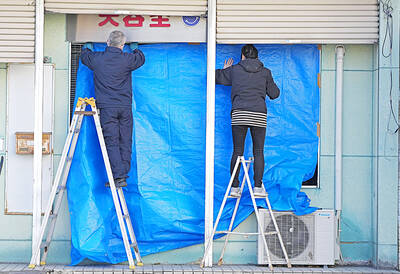Defense industry sources yesterday denied a report filed last week that Taiwan had decided to drop a plan to purchase a second early-warning radar (EWR) from the US, saying the decision had been made several years ago.
Citing “military authorities,” Agence France-Presse (AFP) reported on Tuesday that the Ministry of National Defense had abandoned plans to add a second EWR to its inventory.
The story began more than a decade ago, when Taiwan launched efforts to improve its surveillance capabilities under what came to be known as the Surveillance Radar Program (SRP).
After four years of intense debate, in November 2003, a still-divided legislature agreed to set aside US$800 million for the acquisition of one EWR from the US. In March the following year, Washington responded with a US$1.77 billion notification to Congress, which provided an option for two ultra-high-frequency long-range EWRs.
US-based Raytheon Corp won a US$752 million contract in June 2005 for Taiwan’s first EWR, with construction in Leshan (樂山), Hsinchu County, beginning in 2009. With its 3,000km range and ability to track as many as 1,000 ballistic and air-breathing targets simultaneously, the by-now US$1 billion-plus EWR, which is expected to become operational by the end of this year, has been described as possibly the most powerful on the planet.
The project has not been without controversy over the years, primarily over rising construction and maintenance costs, with Raytheon requesting an additional US$200 million last year. Chinese Nationalist Party (KMT) Legislator Lin Yu-fang (林郁方) last week called on the ministry to “stand tough in negotiating the price with the US,” adding that otherwise the radar could become “a pestering ‘money pit.’”
Despite the cost overruns, Taiwan has said it remains committed to the SRP.
According to last week’s AFP report, anger over rising costs nevertheless led to a decision to abandon plans to purchase a second radar system.
“The minister [of national defense] has said there won’t be another one,” an Air Force spokesman told AFP of the second radar, which would reportedly have been built near Greater Kaohsiung.
However, as reported in the C4ISR Journal and in an annual report by the Congressional Research Service, rather than being a recent decision taken by President Ma Ying-jeou’s (馬英九) administration, which critics have often accused of being soft on defense, Taiwan abandoned plans to acquire a second EWR in early 2007, when the Democratic Progressive Party was in power, though it had faced a KMT-dominated legislature at the time.
Part of the confusion comes from a misunderstanding of US congressional notifications on foreign arms sales, which do not oblige a client to purchase all the articles optioned in the notification, but only serve as a list of items that have been made available for purchase.
Asked to comment on the matter yesterday, a defense industry source confirmed that the decision not to procure a second EWR was made in 2007 and had nothing to do with recent developments.
“This is old news,” the source told the Taipei Times.

Taiwanese were praised for their composure after a video filmed by Taiwanese tourists capturing the moment a magnitude 7.5 earthquake struck Japan’s Aomori Prefecture went viral on social media. The video shows a hotel room shaking violently amid Monday’s quake, with objects falling to the ground. Two Taiwanese began filming with their mobile phones, while two others held the sides of a TV to prevent it from falling. When the shaking stopped, the pair calmly took down the TV and laid it flat on a tatami mat, the video shows. The video also captured the group talking about the safety of their companions bathing

US climber Alex Honnold is to attempt to scale Taipei 101 without a rope and harness in a live Netflix special on Jan. 24, the streaming platform announced on Wednesday. Accounting for the time difference, the two-hour broadcast of Honnold’s climb, called Skyscraper Live, is to air on Jan. 23 in the US, Netflix said in a statement. Honnold, 40, was the first person ever to free solo climb the 900m El Capitan rock formation in Yosemite National Park — a feat that was recorded and later made into the 2018 documentary film Free Solo. Netflix previewed Skyscraper Live in October, after videos

Starting on Jan. 1, YouBike riders must have insurance to use the service, and a six-month trial of NT$5 coupons under certain conditions would be implemented to balance bike shortages, a joint statement from transportation departments across Taipei, New Taipei City and Taoyuan announced yesterday. The rental bike system operator said that coupons would be offered to riders to rent bikes from full stations, for riders who take out an electric-assisted bike from a full station, and for riders who return a bike to an empty station. All riders with YouBike accounts are automatically eligible for the program, and each membership account

A classified Pentagon-produced, multiyear assessment — the Overmatch brief — highlighted unreported Chinese capabilities to destroy US military assets and identified US supply chain choke points, painting a disturbing picture of waning US military might, a New York Times editorial published on Monday said. US Secretary of Defense Pete Hegseth’s comments in November last year that “we lose every time” in Pentagon-conducted war games pitting the US against China further highlighted the uncertainty about the US’ capability to intervene in the event of a Chinese invasion of Taiwan. “It shows the Pentagon’s overreliance on expensive, vulnerable weapons as adversaries field cheap, technologically